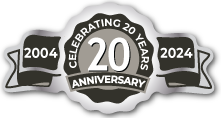Copyright Images & Your Blog
I work with a lot of bloggers. And bloggers like to jazz up their posts with photos. This is great! A photo can really help tell a story or get a point across. But there seems to be a lot of confusion and misunderstandings out there in general, about what is ok to use for photos in their blog. Here’s some simple guidelines to help alleviate the confusion.
Google Images
If you find an image in Google images or on another website, you cannot just use it in your blog. More than likely that image is copyrighted. I’ve heard of a couple instances where someone was sued, even after they took the image down, for a huge amount of money. They had to pay usage fees for however long that image was up. And if they didn’t comply and pay the usage fees, they were going to be sued for more in court, which was going to incur additional legal fees. One of these examples was by a client who had hired a web designer that didn’t know any better (before us). The other said I could link to her story.
Attribution
Giving credit to the photographer does not make it legal. It’s been said by many that as long as you credit the photographer it’s ok to use. This is a myth. That photographer can sue you. However, if you find a photo that you really like and can trace it back to the photographer, just ask. He or she may be happy you’re using their photo. Better safe than sorry.
Stock Photo Sites
The best and safest way to use an image is to use a stock photo site where you pay for the right to use an image. You generally do not have to credit the author when using an image and you can use it commercially. We like bigstockphoto.com. They have a huge selection and their prices are very reasonable, at a couple dollars a photo for web sizes. But please note the ‘Editorial Use Only’ Restrictions – explained below.
Here is a newer stock photo site that doesn’t have as many photos, but is free to use for now, and worth a look – PikWizard. The photos are royalty free and copyright free, but still pay attention to some that are ‘Editorial Use Only’. There is no attribution required with these photos, so you don’t need to credit the photographers.
Creative Commons CC0 license
Another option would be to find photos that are released without copyright and under a Creative Commons CC0 license. A Creative Commons license is used when an author wants to give people the right to share, use, and build upon a work that they’ve created.
A great example of a site that allows Creative Commons licensed downloads is pixabay.com. It’s up to the specific Creative Commons (CC) license whether or not you can use the photo commercially, and you are required to credit the source (example: Photographer Name/pixabay.com).
Another great resource is Wikimedia Commons – commons.wikimedia.org. Every image will list what type of license it carries, and any restrictions. Most are free to use as long as you give credit (similar to editorial use, see below). Here is a link to the types of licenses you will find on Wikimedia Commons: commons.wikimedia.org/wiki/Commons:Reusing_content_outside_Wikimedia/licenses.
Public Domain
Photos marked as public domain are believed to be out of copyright, because of expiration or because it’s been released into the public domain by it’s creator. Since this can be republished under different copyrights (without affecting the public domain status), it’s best to credit where you got it from, and where it came from originally, in case a dispute arises with a publisher.
Editorial Use Only Restrictions
You still have to take into consideration that if it is a photo of a person or logo, it may be ‘Editorial Use Only’. According to BigStockPhoto ‘An image labeled as “Editorial Use Only” is an image that cannot be used to advertise or promote a product or service. The people, objects or places in editorial images are not released. An editorial-only image is limited to non-commercial uses. Proper use of an editorial image includes using it to illustrate news, commentary or opinion in newspaper or magazine articles, blog or website posts, or in non-commercial multimedia presentations (such as film).’
In simpler words – you cannot use a photo that is not released by the model to advertise or sell your product. For example, your website sells surf boards – so you can not use an ‘editorial use’ only photo to promote the selling of your surf boards, but you can put his photo in your blog and talk about a great surfing beach. You should also credit the source (example: Name of Artist/StockPhotoSite.com).
Please Note: We try to simplify the laws for you, the way we understand them, to the best of our knowledge. We are not attorneys.
Free Royalty Free Stock Photos
Reasonably Priced Stock Photos

FREE CONSULTS
For your free consultation, Call us Toll Free at 1‑855‑WEB‑GODS (1‑855‑932‑4637) or 813‑818‑0682 (Tampa, FL) or Email Us
